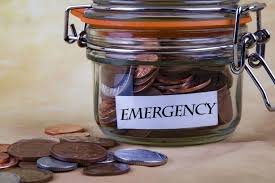“The best time to build an emergency fund was yesterday. The next best time is today.”
Life is unpredictable — job loss, medical bills, home repairs, car breakdowns, sudden travel — emergencies don’t knock before they enter. If you’re trying to take control of your money and stop living in constant panic, your first major financial goal should be to build an emergency fund.
Here’s everything you need to know about what it is, why it’s crucial, and how to start building one (even if you’re living paycheck to paycheck).
What Is an Emergency Fund?
An emergency fund is a stash of money set aside specifically to cover unexpected, urgent, and unavoidable expenses — without relying on loans, credit cards, or borrowing from friends and family.
It’s not for:
- Buying a phone during a sale
- Planning a vacation
- Spending on new gadgets or clothes
It is for:
- Medical emergencies
- Job loss or pay cuts
- Home or car repairs
- Unexpected family travel
Why Do You Need One?
Most people don’t save for emergencies. As a result, even a ₹10,000 surprise expense can derail an entire month’s budget.
Here’s why you need one:
- Protection from taking on high-interest loans or debt
- Peace of mind that you can handle the unexpected
- No need to break your investments or use credit cards
- Financial stability and reduced stress
How Much Emergency Fund Do You Need?
The amount depends on your situation, but here’s a general guide:
| Life Situation | Recommended Emergency Fund |
|---|---|
| Single, renting, no dependents | 3 months of expenses |
| Married, one income | 6 months of expenses |
| Family, EMIs, kids, elderly parents | 6–9 months of expenses |
| Freelancer / Unstable income | 9–12 months of expenses |
Expenses means: rent, groceries, EMIs, bills, insurance, and basic needs — not shopping or vacations.
How to Calculate Your Emergency Fund
Example:
- Rent: ₹10,000
- Groceries & Essentials: ₹8,000
- EMIs: ₹7,000
- Utilities: ₹3,000
- Transport: ₹2,000
- Insurance: ₹2,000
Total Monthly Expenses = ₹32,000
3-Month Fund = ₹96,000 | 6-Month Fund = ₹1,92,000
Where to Keep Your Emergency Fund
The fund should be:
- Safe (no market risk)
- Liquid (easy to access)
- Low risk
Best places to keep it:
- High-Interest Savings Account – Safe and instantly accessible
- Sweep-In Fixed Deposit – Links FD to your account, earns better returns
- Liquid Mutual Funds – Low risk, 1-day withdrawal (for slightly advanced users)
Avoid: Stocks, crypto, real estate, and long-term locked FDs
How to Start Building Your Emergency Fund
Don’t get overwhelmed. Start small. Start where you are.
Mini-Milestones:
- Step 1: Save ₹5,000
- Step 2: Reach ₹25,000
- Step 3: Build 3 months of expenses
- Step 4: Maintain and update over time
Even ₹500/week makes a difference. Use auto-debits or micro-saving apps like Fi or Jar.
How to Maintain It
- Replenish if you use it
- Review annually or after life changes
- Keep it separate from your daily-use account
- Never use it for shopping or holidays
What NOT to Do
- Don’t keep it in your main bank account
- Don’t invest it in stocks or crypto
- Don’t mix it with long-term savings or goals
Final Thoughts
If you want financial freedom and peace of mind, an emergency fund is your foundation. It won’t make you rich, but it will save you from going broke when life surprises you.
“Build the foundation before the storm. Don’t wait for the rain to buy an umbrella.”
Even if you’re starting late — start anyway. Your future self will thank you.
Quick Recap:
| Step | Action |
|---|---|
| 1 | Understand real emergencies |
| 2 | Calculate your essential monthly expenses |
| 3 | Set your goal (3–6 months) |
| 4 | Choose the right place to keep your fund |
| 5 | Start saving regularly — even in small amounts |
| 6 | Maintain and review annually |
Want Help Getting Started?
- Email: myfirstlakh@gmail.com
- Instagram: @myfirstlakh
- YouTube: MyFirstLakh
Let’s take control of your finances — one smart step at a time.

